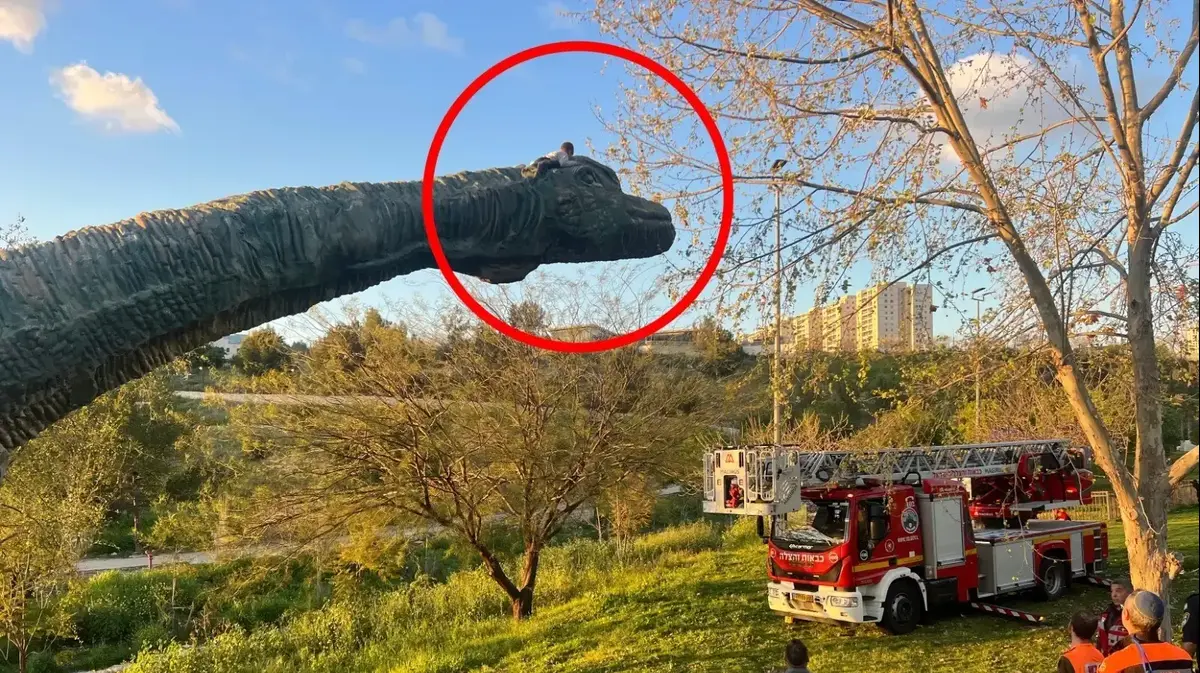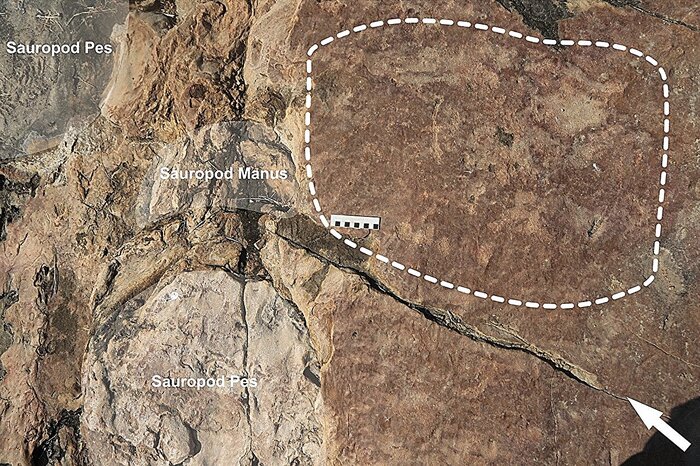122 million years ago, in the coastal areas of an archipelago with a tropical climate formed by small islands connected by estuaries and marshes, in the current province of Castellón, there was an unprecedented animal diversity. A rich fauna of fish, amphibians, crocodiles and turtles were joined, for record, by four other different groups of dinosaurs (sauropods, theropods, ornithopods and thyreophores). Reptiles that dominated the ecosystem for millions of years in the early Cretaceous and whose descendants ended up in the Iberian Peninsula, Africa and Asia, where they diversified into other subspecies. Now, the discovery of a jaw bone and a tooth, along with five vertebrae, which is published today in Scientific Reports of the scientific journal Nature, adds a new relative to the tree of the history of these animals: Protathlitis cinctorrensis.
This unprecedented species has been nicknamed by scientists with that name by the Greek "champion" (Protathlitis) and by Cinctorres, the Castellón town where it was discovered. This carnivorous adult spinosaur about 11 meters long, with an elongated nose and a robust tail, is nicknamed "champion" for the European title won in 2021 by Villarreal CF, the football team of the province (known as the "yellow submarine" for the color of its equipment). To highlight this source of local pride for scientists, the presentation of the finding will be made at Villarreal's field, the Estadio de la Cerámica.
By the morphology of the reconstruction, scientists relate this dinosaur of about 127 million years ago with another large European predator, the Baryonyx walkeri. Already in 2019, Vallibonavenatrix cani, a dinosaur of this family discovered in the same mountain system of the Iberian Peninsula, had been described in the area.
Dinosaurs: The jaws of Tyrannosaurus rex were protected by lizard-like lips
It is the approximate prehistoric snapshot obtained from the eight paleontological campaigns that have been carried out over 20 years at the ANA site, in Cinctorres. The remains of vertebrates from the Arcillas de Morella formation are an authentic dinosaur quarry, as endorsed by the "nearly a thousand fossils found in ANA, of small bones or even a femur of more than one meter of a sauropod", proudly details paleontologist Andrés Santos-Cubedo, main author of the finding and scientist at the Universitat Jaume I de Castellón (UJI).
In their research, the scientists point out that this new species first appeared in Laurasia, the large expanse of land in the northern hemisphere that grouped millions of years ago what is now known as North America and Eurasia, and later migrated to present-day Africa and Asia, where younger spinosaurs have been cataloged. "It is under discussion what happened, why dinosaurs of this family are found in Asia and Africa," says Santos-Cubedo. "We think the group was created here in Europe, and then they migrated and diversified from these species that we know."
Oscar Sanisidro
The finding of a curved tooth with a saw indicates, according to the publication, that these predators ate mainly meat. Although it also "allowed them to ingest fish" from the coastal shoals, suggests the researcher. In turn, the arrangement of the maxilla gave them a minimum of 16 teeth in their oral cavity. Santos-Cubedo explains that the reason why it is common to find numerous dinosaur teeth in excavations is because they were constantly molting, like sharks. An extra dental battery, when there was a very pronounced wear, which replaced the previous one: "Behind the functional tooth, another one grew, in a row, so in life these changed several times," says the paleontologist. The ability to replace their teeth was due to the fact that their carnivorous diet damaged the dental crowns, even breaking.
These fossils indicate that the "champion" Protathlitis and Vallibonavenatrix cani "could have lived perfectly together", because their fossils have been found in the same area and geological formation. For the paleontologist, "that is normal, it happens in other sites in the world where more than one dinosaur is found." The samples found, in any case, were separated by deposits a few kilometers away, in different locations, explains Santos-Cubedo, leader of the Grup Guix de Vila-real, an association that defends the geological and paleontological heritage of Castellón.
One of the advantages of the area, which explains its richness in well-preserved dinosaur samples, is due to the "rapid fossilization of skeletal remains in wetlands," describes Ángela Delgado Buscalioni, from the Autonomous University of Madrid (UAM). It happened very quickly when the vertebrate was buried under the sand at low tide. When the dinosaurs died, their skeletons sank into the bogged down areas and lay in contact with the surface. Hence, the samples were protected from the degradation of cold, rain or sun, and now, says the paleontologist, bones are excavated almost without erosion "compact in the clay sandstone".
The paleontologist Begoña Poza, co-author of the study, excavates the piece 5ANA-78, in the ANA site (Cinctorres, Castellón). Guix Group
The researcher, an expert in vertebrate biology and outside the study, welcomes the publication because it provides interesting information about the "gaps in scientific knowledge about the variability between species" of dinosaurs. Delgado believes it is possible that "in a later review synonymy can be given, grouping species like the one in the new discovery," due to the common characteristics with other spinosaurs. But for her "it is still interesting" the finding, since "this is how scientific knowledge advances", although finally it is chosen to group these dinosaurs under the same name.
For the paleontologist José Miguel Gasulla, from the Evolutionary Biology Group of the University of Distance Education (UNED), the Iberian Peninsula has "great international significance" in the study of dinosaur fossils and its interest "has increased exponentially" in recent decades. The scientist, with extensive experience in the excavations of the Castellón region of Els Ports, says that for two centuries the existence of dinosaurs in that site was known.
Gasulla explains that during the "formation of the Iberian mountain range, precisely between the Jurassic and Cretaceous periods, sediments from that time were deposited." That is why in Burgos, La Rioja, Soria or Cuenca you can also see dinosaur footprints and large paleontological sites. A position now privileged for the paleontological study in Spain, adds Gasulla, and for whom the new work "moves research forward" from the scientific point of view.
You can follow MATERIA on Facebook, Twitter and Instagram, or sign up here to receive our weekly newsletter.









